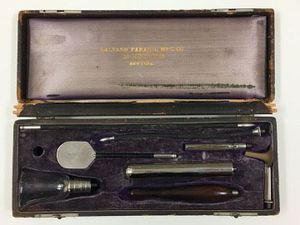It’s easy to look back at the valuable milestones in vision care. But history’s blights are not so easy on the eyes. The American Academy of Ophthalmology and the Truhlsen-Marmor Museum of the Eye™ present a cringe-worthy tour of 20 quack eye care devices and treatments used throughout medical history.
The key takeaway from this crash course in quackery? Be wary of present-day devices that promise more than they can deliver.
The Actina Company launched its Sight Restorer in 1886. After the company’s president admitted he had no medical background and federal authorities deemed his product “absolutely worthless,” it was pulled from pharmacy shelves.
The small cylindrical device was said to house a battery that stimulated blood vessels. Promising to cure not only eye disease, but also ear and nose troubles, the device offered no therapeutic value in reality. Worse, the bottle contained not a battery but a mixture of oils and extracts that irritated the user’s eyes.
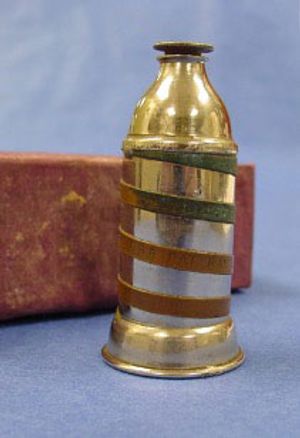
Spermaceti was the name for a substance taken from the head of a whale. It was falsely believed to be whale semen, which explains the name.
The waxy substance —already used to make candles and other products —gained an unfounded reputation as an effective pink eye (conjunctivitis) treatment. Please don’t use unproven home remedies for pink eye or other eye conditions—see an eye care professional for correct diagnosis and treatment.
This device promised—you guessed it, better sight. The instructions (if someone lacking better sight could read the microscopic text) directed the user to place the device against the eyelid with a stick-like utensil. Through a rubbing and twisting motion, the exercise would promote greater blood flow to the eye muscles.
Two problems: Eye muscles, unlike skeletal muscles, are not strengthened through training and exercise. And while these important muscles help the eyes move, they are not responsible for how well we read an eye chart. So it’s not shocking to learn the company shuttered in 1937 for mail fraud.
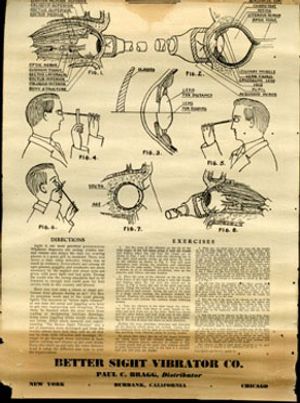
4. Color Therapy
The notion that different shades of visible light can heal the body is called color therapy or chromotherapy. Augustus J. Pleasonton launched a blue light health craze after claiming it improved the health of all living things. Scientific American debunked his theories in 1877.
Later, in 1920, Dinshah P. Ghadiali began selling the Spectro-Chrome Therapeutic System. The device, a box with a large light bulb inside, emitted light through 12 colored filters. Each color was said to help specific ailments or body parts. The blue light filter was used to “cure” glaucoma and cataracts. He and his device were exposed as frauds in court. However, a version of the device is still sold today, so don’t be fooled—find an ophthalmologist to treat glaucoma and cataracts.
5. Dr. J. Stephen’s & Co. Patented Cornea Restorer
Dr. J. Stephen’s & Co. Patented Cornea Restorer was billed as a one-stop shop. Ads for the turkey-baster like device claimed to rid you of glasses, cure cataract, strabismus (crossed eyes) and even partial blindness. If only it were that easy!
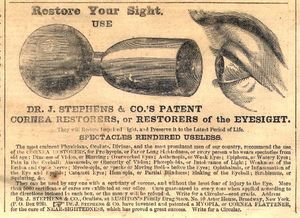
Care for some pepper? No, this wasn't a grinder wielded by a server in a white-tablecloth restaurant. As a massager, it was worthless in service of the eyes.
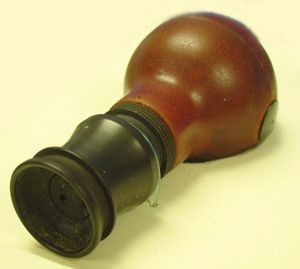
Charles Tyrell’s Ideal Sight Restorer looked impressive inside its beautiful box. But pretty packaging could hide the ugly truth for only so long. The law caught up with Tyrell soon after the American Medical Association deemed his product worthless.
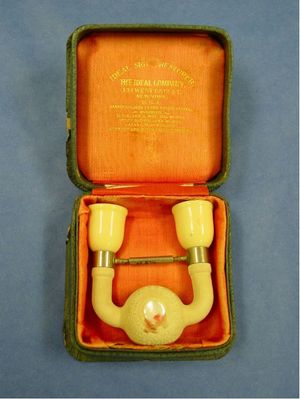
Charles Tyrell is granted dubious distinction as the only person to appear twice on this list of quack devices. Chased out of town in 1915 for outcry against his Ideal Sight Restorer, Mr. Tyrell resurfaced in England, peddling the Neu-Vita Oculizer. The revamped device purported to cure all manner of ailments, just like its predecessor. But the massaging eye cups and rubber bulbs delivered nothing but hot air.
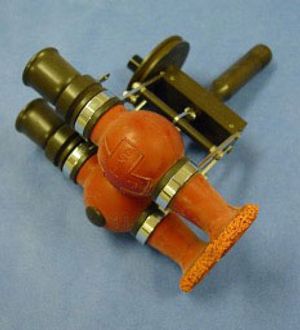
The Galvanic stimulator sought to cash in on the popular but unproven field of electrotherapy. Stimulating blood flow with small currents of electricity was said to improve eye health. But the wooden contraption wasn't any more effective than a shoe box.
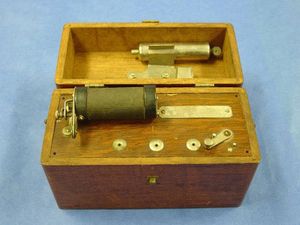
Residing at the midpoint of quack infamy is the electric stimulation device. Similar in function to the Galvanic stimulator, this device looked more professional. But the most essential upgrade—verifiable medical benefits—remained missing.
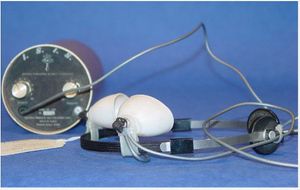
11. Sarsaparilla
The woody root of the sarsaparilla plant has been used for centuries as a skin protectant and anti-inflammatory treatment. It has a long, sordid history that includes fighting syphilis, a sexually transmitted bacterial infection, as early as 1494. Some claimed the tropical plant could cure syphilis affecting the eyes (syphilitic uveitis). While some studies show sarsaparilla may reduce pain, there is no proof it can cure syphilis or syphilitic uveitis. Don’t believe the hype! See your doctor for an antibiotic prescription— the only proven treatment.
Not much is known about Singleton’s Eye Ointment. The packaging claimed to treat everything, perhaps allowing the ointment to get away with treating nothing. This seems to be what happened, as the quack “cure-all” duped countless consumers for 350 years.
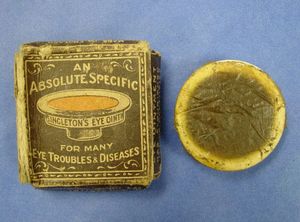
This electronic device came equipped with three glass attachments in its handsome satin-lined box. The glass electrodes delivered heat energy to the body and were said to increase blood supply and stimulate the optic nerve. True to its name, the electrodes produced a pretty violet glow as it worked its “magic.” But magic is illusory and the u-shaped glass tube (in the center of this set) did not actually stimulate the optic nerve.
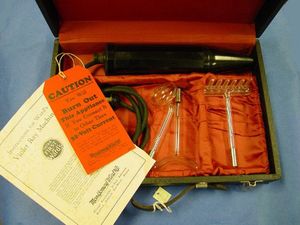
Sequels cash in on the good name of their predecessors. But perhaps no one knew the truth about electric stimulation devices of the day: they didn't work. That didn’t stop the developers of the Walker Ophthalmic High Frequency Unit. This sequel, like the originals, didn't improve blood flow or optic nerve function.
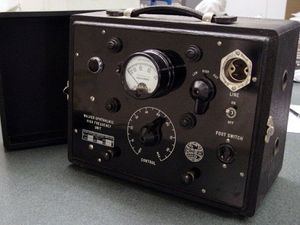
Small polished shells or stones placed under the eyelid were once a go-to method for removing foreign irritants from the eye. But by today's standards, introducing a second foreign object to remove the first isn't sound medical advice. Never place any foreign object or substance inside the eye. Our eyes reflexively blink and tear to remove dust and other particles. Artificial tears may help too.
If you still feel something inside your eye (called foreign body sensation), see an ophthalmologist. They may indeed find something in your eye, but typically, another culprit is to blame. Foreign body sensation is a symptom of stye, blepharitis, allergies, corneal abrasion and other conditions.
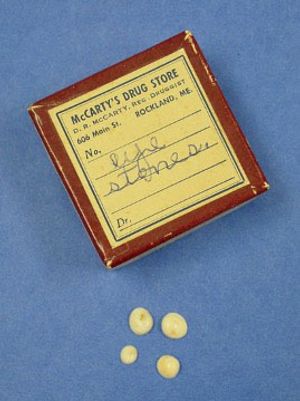
The most contemporary device on our list is this 1996-era eye massager. Though it resembled ski goggles, its instructional booklet highlighted enhanced nerve function as a principal benefit. Claiming to increase stimulation and circulation, the mask was advertised as a treatment for refractive errors, crossed eyes (strabismus) and even facial paralysis.
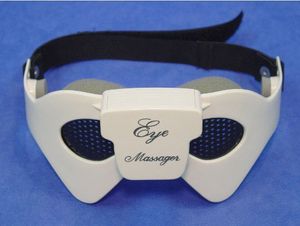
Before 1906, medicines like Pettit’s American Eye Salve were unregulated. This meant that providing a list of ingredients, something now taken for granted, was not required. Pettit’s American Eye Salve flourished in this environment. Aggressively marketed as a healer of tired, inflamed and sore eyes, this salve of mysterious composition and dubious efficacy flew off pharmacy shelves for 174 years. It brings newfound appreciation for the phrase “FDA-approved.”
Countless brands of eye water were sold during the late 19th century. Dr. Isaac Thompson’s Celebrated Eye Water was billed as a remedy “for all complaints of the eyes.” The packaging seemed designed to evoke trust in the consumer. It resembled U.S. currency and featured a portrait of Dr. Thompson fit for the face of a dollar bill. But the benefits of his celebrated eye water could not be described as “money.”
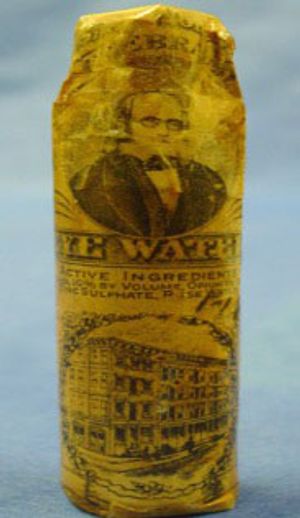
The Barret Eye Normalizer was an eye massager that promised to rejuvenate tense and tired eyes, so one could throw away their glasses. Never mind that one’s eye shape and length—not eye fatigue—determines the need for glasses. The device was sold until 1937, when its manufacturer was shut down for mail fraud.
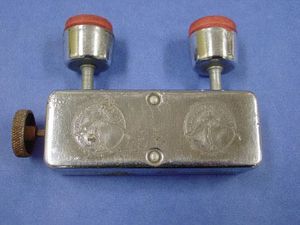
This electrotherapy kit looked like a case for a woodwind instrument. Each of the eight disassembled pieces had its own mirror-image, velvet-lined home. The attractive case might have over-compensated for a device that didn’t cure eye disease as promised. Worse, the kit instructed users to fill the eye bath with water and plug in the device for an even bigger shock.
